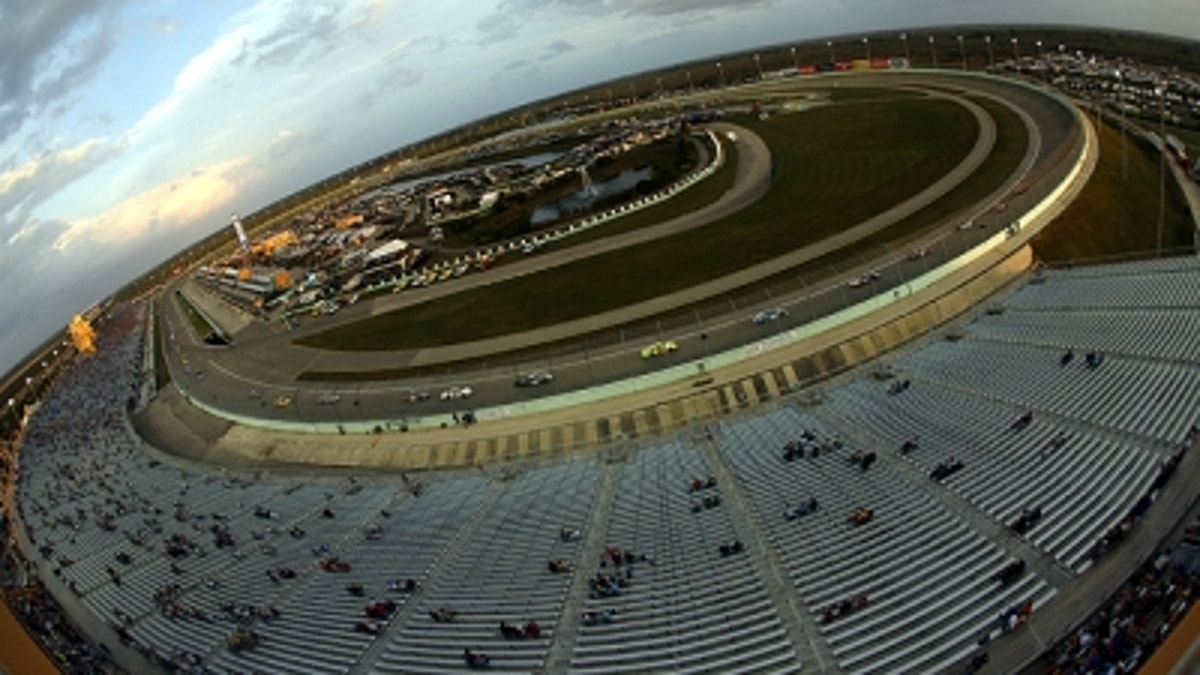
Homestead-Miami Speedway, site of the weekend races that will decide NASCAR’s three major championships, exists in south Florida because Hurricane Andrew visited here two decades ago.
Carrying 165-mile-per-hour winds, Andrew pummeled the Florida coast in August 1992, killing 40 people, causing more than $25 billion in damages and devastating Homestead, a community about 30 miles south of Miami.
The storm, one of the worst natural disasters in the history of the United States, left 180,000 people homeless and more than 1 million without power. The Homestead Air Force Base took the brunt of the storm and later was essentially abandoned, costing the area 7,500 jobs, including about 1,000 civilian jobs.
Hundreds of homes and businesses in Homestead were crushed by the storm’s winds. Officials estimated that 100,000 people left the area after the storm and never returned.
Twenty years later, Homestead, while it will never be the town it was before the storm, is thriving again. Businesses have rebuilt, and the streets through town are filled with tourist traffic.
Outside town stands the most obvious reminder of the post-Andrew recovery – Homestead-Miami Speedway.
The track was conceived and built as a revival project for Homestead, a way to lift something from the ashes of what was at that time the costliest storm in American history.
The major mover and shaker behind the project was Ralph Sanchez, a Miami motorsports promoter who had organized events on makeshift courses downtown. He was looking to build a permanent facility, and, after the storm, Homestead was sitting on millions of dollars of federal money designated for recovery.
“Ralph had made a fortune as a developer building townhouses and affordable housing,” said Al Garcia, who worked for Sanchez 20 years ago and now is Homestead-Miami Speedway’s vice president of operations. “I drove down with him after the storm to see the outcome. A lot of stuff he had built was leveled. Roofs were gone. It was as devastating as anything I’ve ever seen.”
The speedway rose from land east of town after a groundbreaking Aug. 24, 1993, exactly one year after the hurricane. It opened with a Nationwide race in November 1995 and began hosting the Sprint Cup season finale in 2002.
“It’s a source of pride around here,” Garcia said. “For the people born and raised in Homestead, the area was always the redheaded stepchild to Miami. The power base is in Miami, and, as far as Homestead, you might drive through and stop and get some fresh strawberries on the way to the Keys.
“Now we bring in major-league events. It’s a great source of pride. It kind of put this area on the map. Before, it was known for the Air Force Base, but that identity kind of went away with the storm.”
Although NASCAR’s Ford Championship Weekend is the major event on the speedway’s schedule, Garcia said the track is active 280 days a year with testing and other motorsports events.
International Speedway Corp. eventually acquired the speedway.
It remains a Homestead landmark and one of the most architecturally pleasing stops on the NASCAR circuit. Twenty years ago, in the stunning aftermath of one of the biggest storms of the 20th century, few would have guessed Homestead would be welcoming champions to town.
Mike Hembree is NASCAR Editor for SPEED.com and has been covering motorsports for 30 years. He is a six-time winner of the National Motorsports Press Association Writer of the Year Award.
